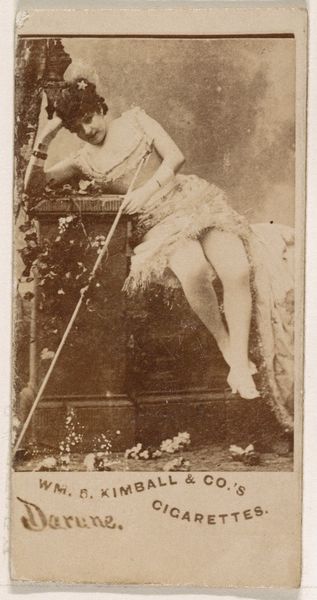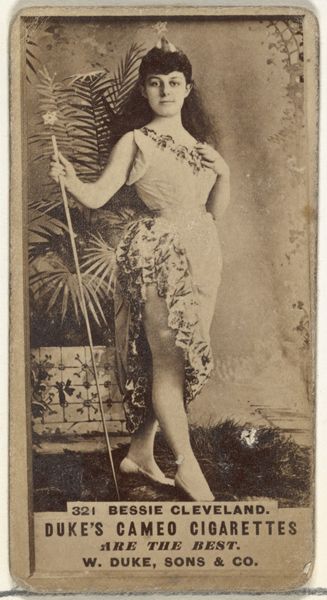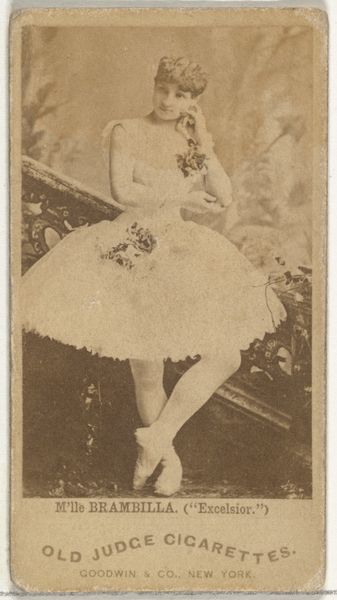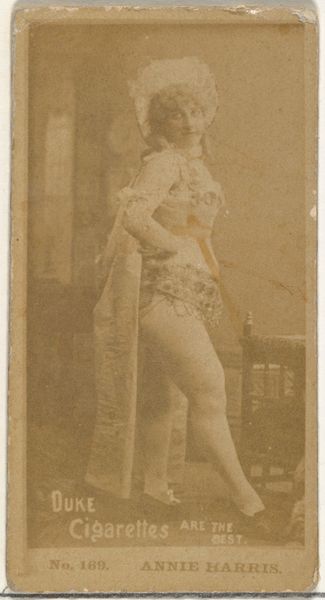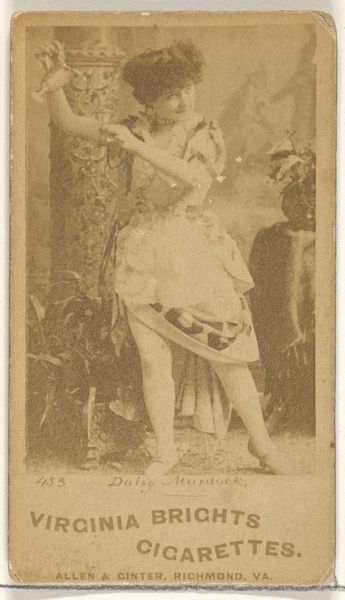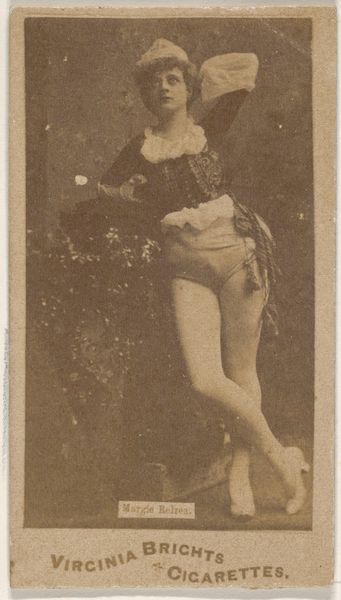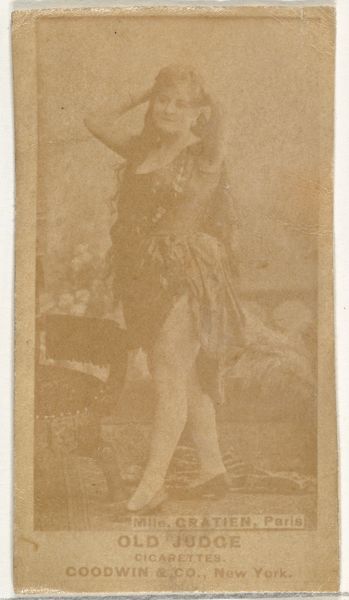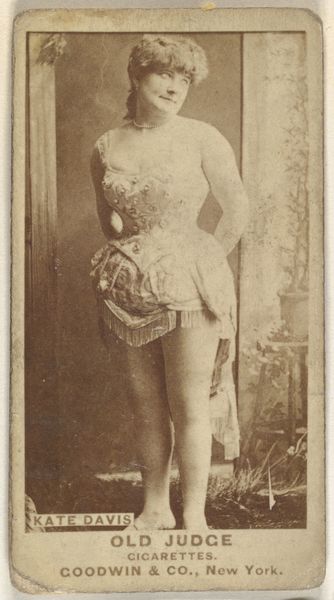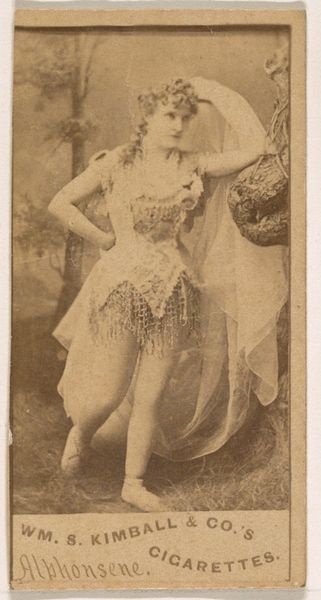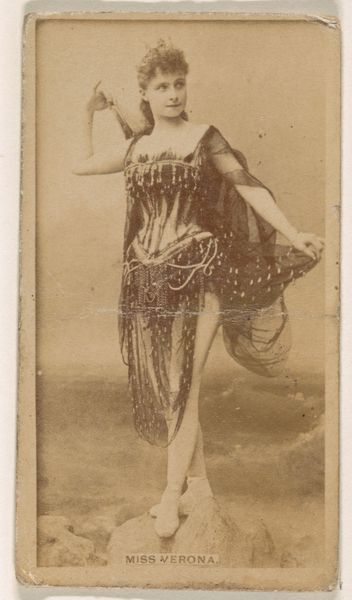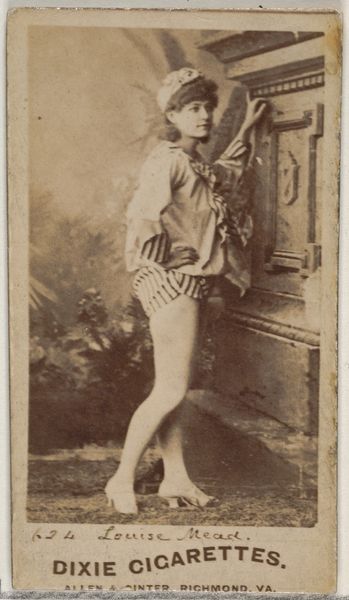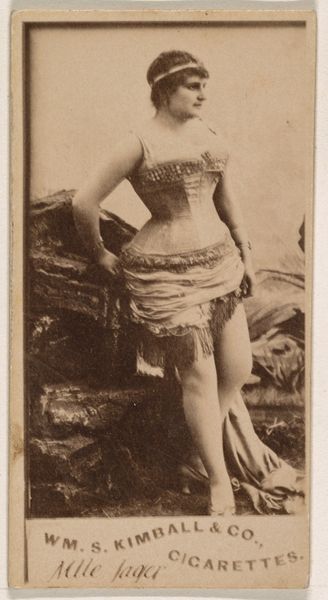
Card Number 627, Miss Bosh, from the Actors and Actresses series (N145-3) issued by Duke Sons & Co. to promote Cross Cut Cigarettes 1880s
0:00
0:00
print, photography
#
portrait
# print
#
charcoal drawing
#
photography
Dimensions: Sheet: 2 11/16 × 1 3/8 in. (6.8 × 3.5 cm)
Copyright: Public Domain
Editor: This is "Card Number 627, Miss Bosh," a portrait print from the 1880s by W. Duke, Sons & Co. It was actually produced to promote Cross Cut Cigarettes. It’s intriguing—a glamorous woman used to sell tobacco. What do you see in this piece, from a cultural context? Curator: It’s fascinating to consider these cards as historical documents embedded within complex social power dynamics. The image presents an idealised vision of femininity designed to appeal to a male consumer base, and we have to examine this carefully. The performance aspect is also key: as an actress, "Miss Bosh" herself is a product on display. What's the nature of that representation? Editor: That's an interesting point; her identity is layered by being both an actress *and* a figure in marketing. Does the printmaking medium influence how we understand her role? Curator: Absolutely. Print, specifically these cards distributed with consumer goods, democratized imagery while simultaneously reinforcing class and gender hierarchies. Think about the relationship between capitalism, representation, and the gaze: the predominantly male gaze that this card is constructed for. Does the use of sepia tones soften that male gaze, romanticize it, legitimize it? Editor: I see. So, it’s not just about selling cigarettes, but also selling a certain idea of women and femininity during that era? It is much more complex than what I assumed initially. Curator: Precisely! And the fact that it's an actress further complicates the question. What kind of labour is being presented here? How does it relate to visibility, to aspiration? What were the working conditions like for actresses then, how were they perceived and paid? Considering it also from the perspective of female consumers, what are the diverse interpretations? Editor: That makes me wonder about her personal agency, too. I appreciate the broader social implications of something as seemingly simple as a cigarette card. Curator: Exactly! These seemingly trivial objects can offer such powerful insights into the complexities of identity, labour, and representation.
Comments
No comments
Be the first to comment and join the conversation on the ultimate creative platform.
